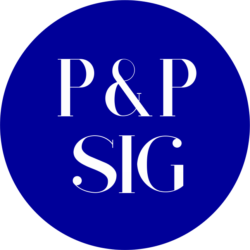Proceedings-2002; By Ann Rockley and Jodee Clore; Summary by Maria Christophel (2006)
This article defines Silo Trap™, Enterprise Content Management (ECM), and promotes the use of a unified content strategy for managing the volumes of information produced by the various areas of a company. It describes the problematic effects of content silos such as poor communication, lack of standardization and consistency, high costs, etc. It expands the definition of content management beyond Single Sourcing into ECM for which it provides description of benefits such as maintenance speed, cost reduction, and customer relation opportunities.
Assessing the Maturity Grade of Policies & Procedures Programs
Proceedings-1998; By Raymond Urgo; Summary by Maria Christophel (2006)
This article defines the terminology and the scope of policies and procedures and introduces an Assessment Model for measuring the level of policies and procedures programs developed in a corporate structure. The model measures the grade in consideration to the functions provided by the program. It states that the model plays a synergistic role measuring the contribution of P&P to the organization.
Creating a Paradigm Shift In Managers and Professionals Who …
Proceedings-1994; By Verna Richardson; Summary by Maria Christophel (2006)
This article narrates the activities the policies and procedures writer performed to change managers’ and professionals’ view of standards. It explains some of the steps involved in the project initiation phase such as researching, recommending changes, and implementing the project. It relates the methods the writer used for marketing the project and obtaining support such as outlining the benefits to the different groups, explaining the concept of structured writing and becoming a Reader Advocate. The article enumerates the rights of readers in The Richardson Readers’ Bill of Rights. Lastly, the article relates the benefit of cross-functional teams, which were created by the acceptance to the project and the adoption of the new standards by staff, managers and professionals of the entire organization.
1996-Policies and Procedures PIC Meeting
Proceedings-1996; By Raymond Urgo; Summary by Maria Christophel (2006)
This agenda provides information about the status of the P&P SIG and the accomplishments for the past year. It outlines the new business items to be: raising issues relevant to P&P and the PIC; developing action plans for PIC and upcoming conferences; engaging volunteers to assist with operations.
1995-Policies and Procedures PIC Meeting
Proceedings-1995; By Raymond Urgo; Summary by Maria Christophel (2006)
This agenda provides information about the status of the P&P SIG and the accomplishments for the past year. It reports on the willingness of the P&P SIG members to assist as volunteers. It also notifies that four teams were created for managing: membership, newsletters, programs and projects, and public relations.
1994-Forming a Policies & Procedures Professional Interest Committee
Proceedings-1994; By Raymond Urgo; Summary by Maria Christophel (2006)
This agenda provides details for one of the Annual STC Meeting agenda items. The item establishes the need to create a Professional Interest Committee (PIC) for assisting and uniting the writers of policies and procedures as one of the various groups of technical writers who are members of the STC. It proposes the PIC’s mission, goals, scope, and activities; and it invites policies and procedures writers to join and volunteer to participate in this committee.
Who Should Document Organizational Policies & Procedures
Proceedings-2002; By Raymond Urgo; Summary by Maria Christophel (2006)
This article addresses the typical situations and the typical solutions that organizations follow when documenting operational policies and procedures. It explains the unrealistic demands placed on employees and the effects of non-participation in the development of procedures. It also explains the common solutions such as hiring a writer, developing a program for employee participation, and training employees to write procedures. The article comments on the need to establish a team among supervisors, management, employees, and the stakeholders to support the efforts of a technical writer with writing and editing skills for producing performance-based communication.
Marketable Skills for the Policies and Procedures Professional
Proceedings-1995; By Raymond E. Urgo; Summary by Maria Christophel (2006)
This article provides a brief insight in the various skills that are required from Policies and Procedures writers. The article states that technology advancements and work force reduction require writers to acquire or become stronger in their marketing, managerial, analytical, instructional, communication, and people skills.
Managing a Company-Wide Policies and Procedures Project
Proceedings-1996; By William B. Crepes; Summary by Maria Christophel (2006)
This article discusses three important factors that must be considered when managing the documentation of policies and procedures company-wide without a disruption to business operations. The people factor section explains the reasons and methods for involving executive management in the project, and gaining the acceptance of the employees. The project factor section explains the methods for establishing scope, priorities, scheduling, and prototype development. The publishing factor explains the reasons for analyzing audiences, making documentation recipient lists, and controlling the distribution.
Full-Employment Legislation for Technical Writers
Proceedings-1993; By Carolyn Dean; Summary by Maria Christophel (2006)
This article narrates the scenario the Author experienced when she began working on a project to implement regulations in a nuclear facility. It lists the different opportunities regulations provide to technical writers; policies and procedures development is counted among these opportunities. It explains how writers can take advantage of these opportunities created by legislation by advising to get immersed into the regulation and taking a related class.
